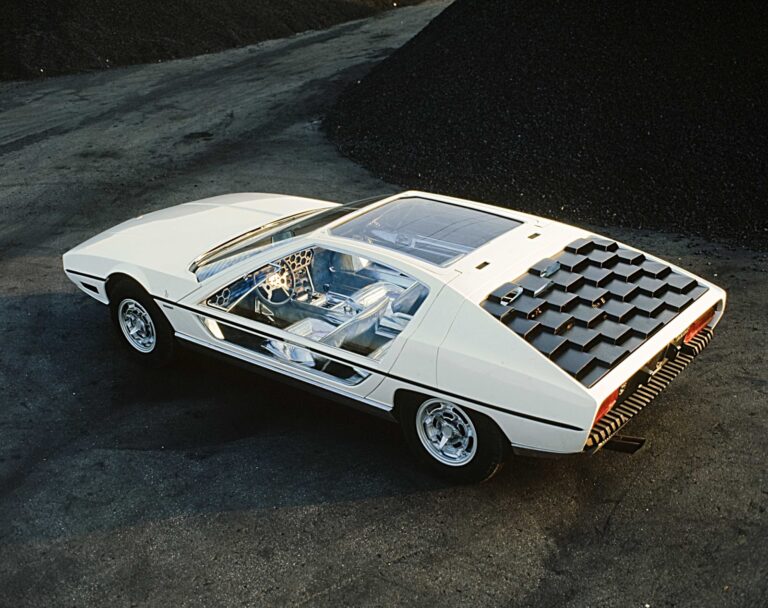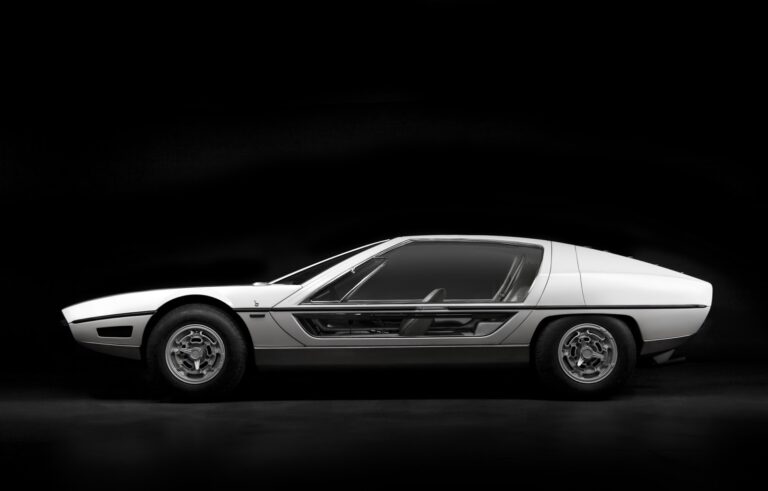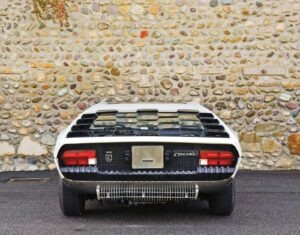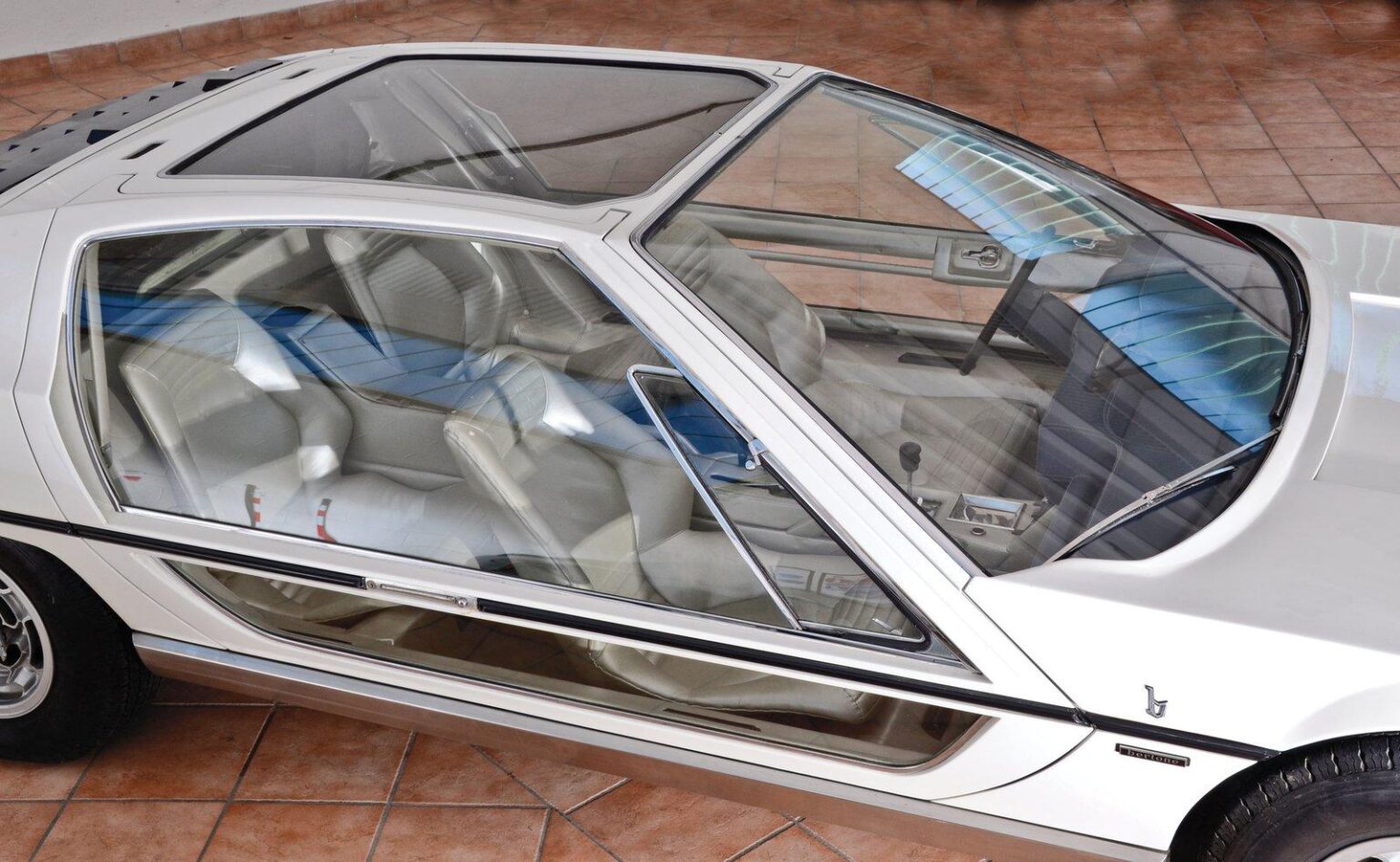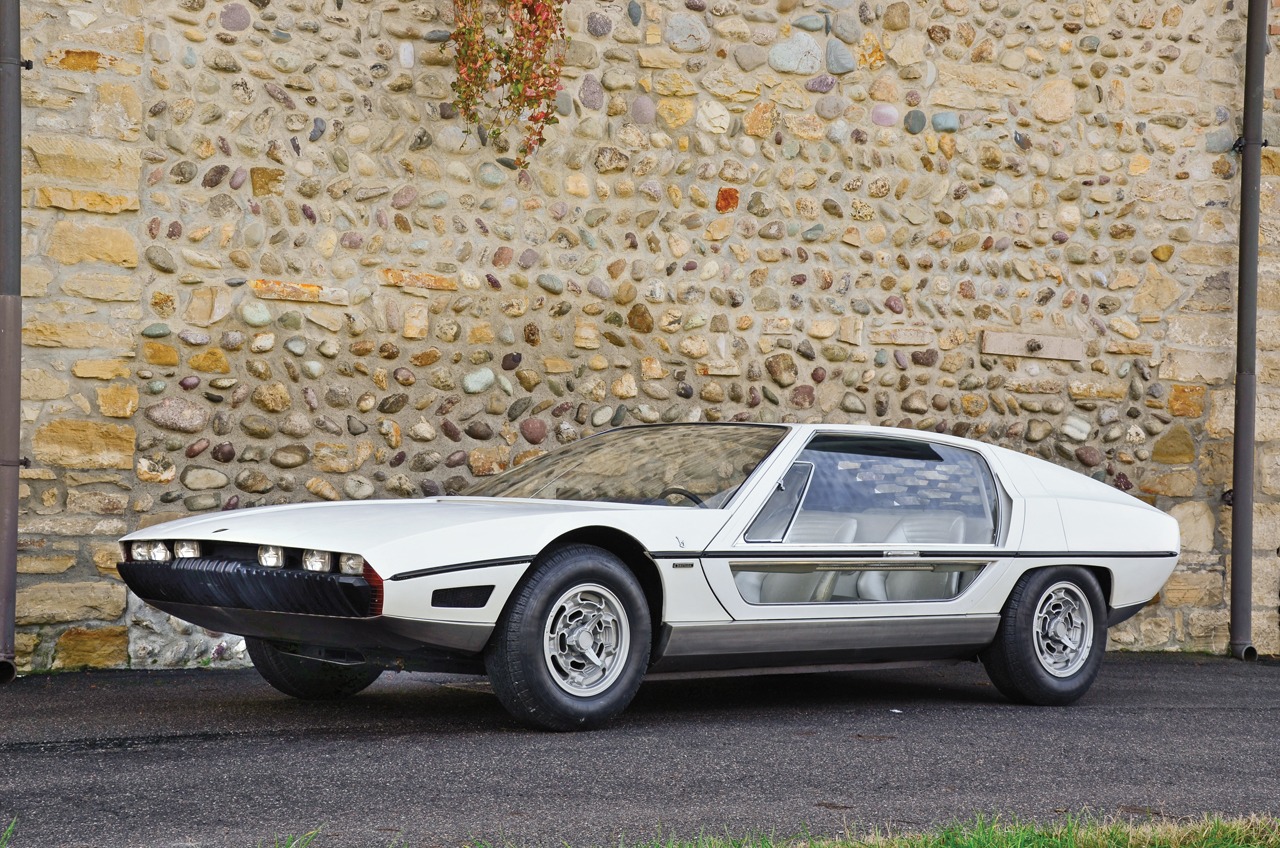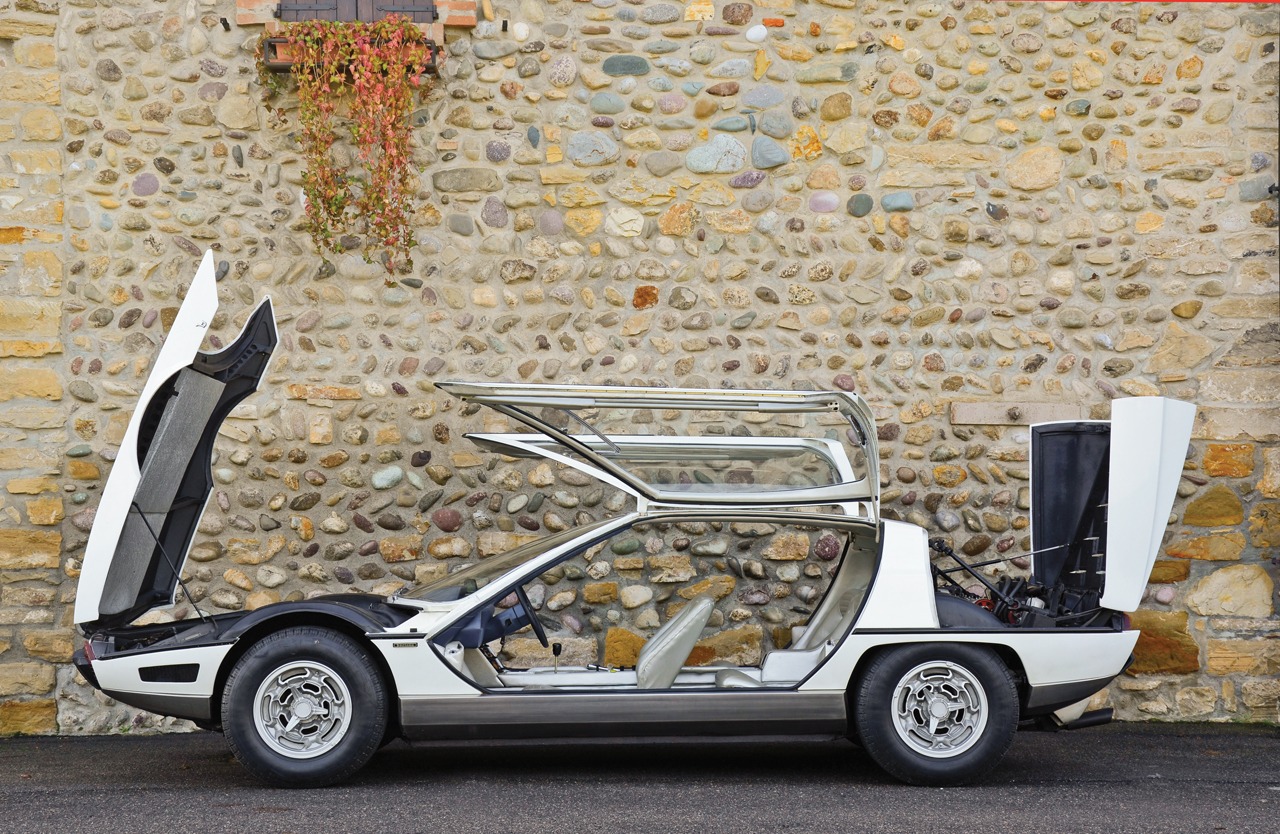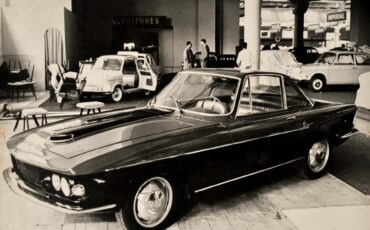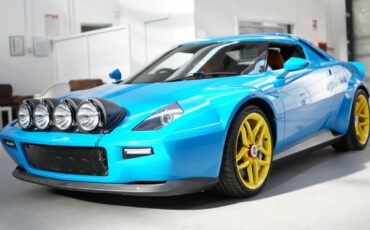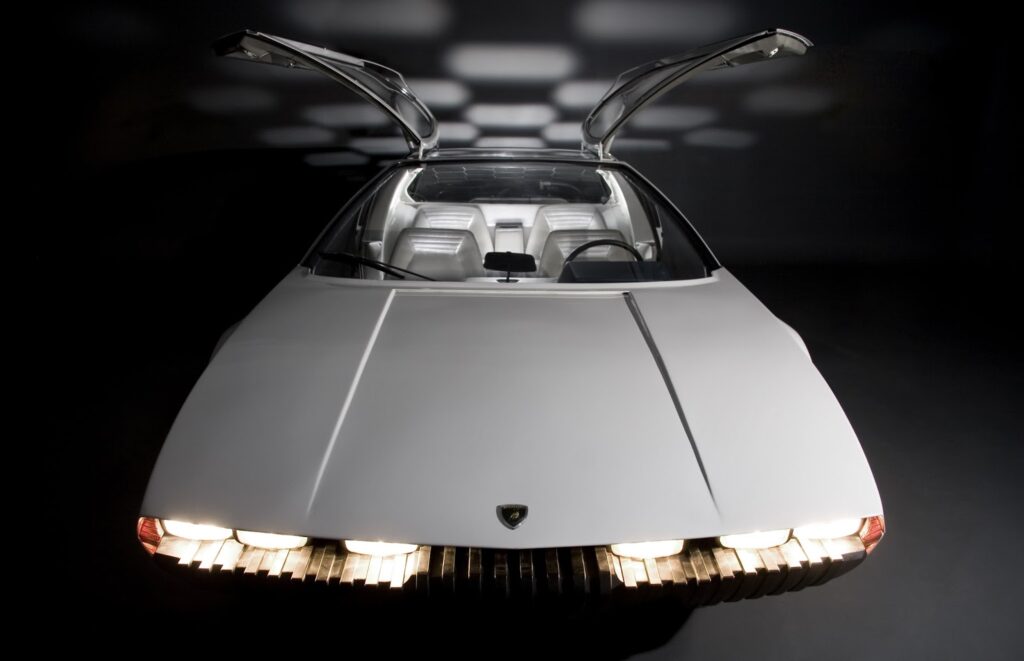
The Lamborghini Marzal, a masterpiece of automotive innovation, emerges as a beacon of creativity in the dynamic landscape of automotive history. Crafted during the vibrant era of the 1960s, this visionary concept car, conceived by Marcello Gandini at Bertone, stands as a testament to the boundless potential of design and engineering. With its avant-garde aesthetics and groundbreaking technology, the Marzal captured the imagination of audiences worldwide, leaving an indelible mark on the automotive industry.
As we embark on a journey to unravel the mystique surrounding the Lamborghini Marzal, we find ourselves drawn into a world where artistry meets engineering, and imagination knows no bounds. In this first part of our exploration, we’ll delve into the genesis of the Marzal, tracing its origins to the fertile creative landscape of 1960s Italy, where visionary designers and bold engineers converged to redefine the boundaries of automotive design.
Genesis of Innovation
The genesis of this dream car traces back to the year 1966, a time when automotive ingenuity was at its peak. However, the origins of the Marzal are shrouded in conflicting accounts, adding to its mystique and allure. One narrative places the inception of the Marzal at Bertone in Turin, where the daring concept of an inverted and halved twelve-cylinder engine took shape. Another version attributes the genesis to Lamborghini itself, suggesting that the idea emerged during the development of the groundbreaking Miura, unveiled at the Geneva Motor Show in March 1966.
Regardless of its origins, one thing is clear: the Lamborghini Marzal captured the imagination of automotive enthusiasts with its avant-garde aesthetics and groundbreaking engineering. Crafted by the visionary designer Marcello Gandini, then-chief designer at Bertone, the Marzal marked Gandini’s first foray into concept car design. Building on his previous successes, including the iconic Miura, Gandini pushed the boundaries of automotive design with the Marzal, emancipating himself from the stylistic norms of his predecessor and formulating his own unique vision.
When the Marzal made its debut at the Geneva Motor Show on March 9, 1967, it caused a sensation. Auto enthusiasts and industry insiders alike were captivated by its futuristic design and innovative features. With its gullwing doors, silver leather seats, and strikingly low front end, the Marzal exuded an aura of sophistication and elegance unlike anything seen before. Its absence of pop-up headlights, replaced instead by six shallow slits, added to its mystique, giving it a look of supreme confidence as it glided down the road.
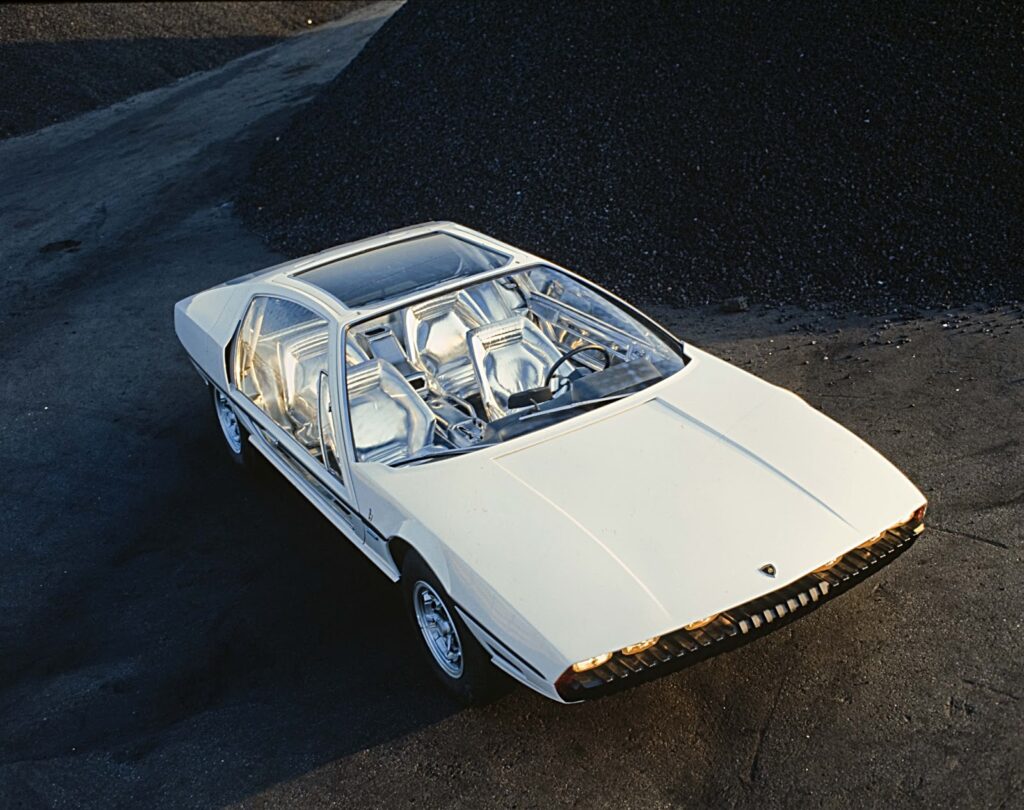
The Marzal significantly contributed to Bertone’s ascent as the foremost hub for contemporary automotive design in the latter part of the 1960s. What distinguished this esteemed carrozzeria was not just its boundless creativity but also the practical functionality of its groundbreaking concepts. A prime example lies in the ingenious mechanism governing the iconic gullwing doors, showcased within the engine compartment.
Power transmission for the doors is orchestrated through two steering columns, each equipped with two universal joints. These columns are set in motion by two lengthy garage door springs positioned transversely behind the six-cylinder engine in the motor bay. Steel cables stretch between the coil springs and the steering columns, navigating over eccentric pulleys. Consequently, the spring assistance for each of the roughly 30-kilogram gullwing doors is most potent in their upper position, tapering off proportionally during closure – an intentional design aspect aimed at enabling the effortless self-shutting of the glazed portals from within, sans external aid.
Exploring the Innovative Features of the Lamborghini Marzal
Bertone’s commitment to ensuring every aspect of the Marzal functioned like a production vehicle was evident in the meticulous attention to detail. From the air conditioning system to the instrument cluster and seating arrangement, every component was designed to be not just aesthetically pleasing but also practical and functional.
The air conditioning system was a highlight of the Marzal, showcasing Bertone’s dedication to innovation. While the cooling power of the system was impressive, it was the intricate air distribution system that truly set it apart. Throughout the cabin, numerous aluminum vents were meticulously crafted to ensure optimal airflow and temperature control. This attention to detail was a testament to Bertone’s pursuit of maximum comfort for the occupants, even in the most extreme conditions.
However, despite the innovative features and luxurious amenities, the Marzal fell short in terms of spatial comfort. The seating arrangement, though visually striking with its individual seats seemingly scattered across the cabin, proved to be less than ideal in practice. The forced semi-reclined position compromised legroom, while the low roofline caused discomfort for taller occupants. It was a reminder that while Bertone’s designs were often ahead of their time in terms of aesthetics and technology, practical considerations like passenger comfort were sometimes overlooked.
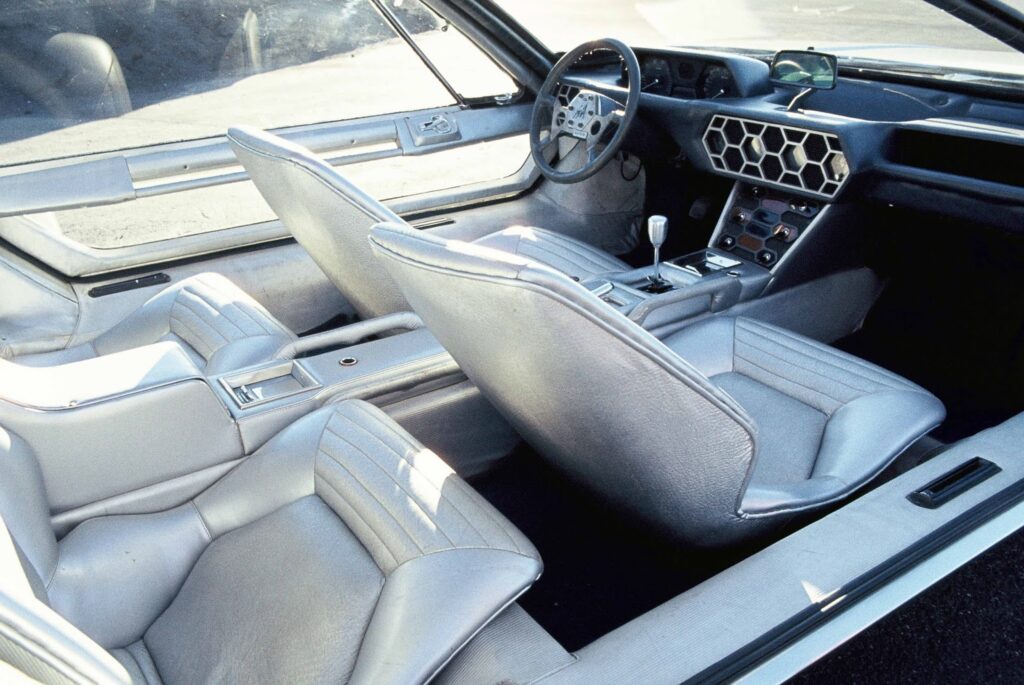
One of the most striking features of the Marzal’s design was Marcello Gandini’s signature hexagonal motif, which permeated every aspect of the car’s interior and exterior. From the dashboard to the steering wheel hub, hexagonal shapes were everywhere, giving the Marzal a cohesive and visually captivating design language. This attention to detail not only showcased Gandini’s design prowess but also added to the car’s futuristic and avant-garde appeal.
However, not everyone was enamored with the Marzal’s extravagant design. Ferruccio Lamborghini, the founder of Lamborghini, reportedly disliked the car’s bold styling and unconventional features. He preferred a more traditional approach to automotive design, favoring sleek and elegant grand tourers over the Marzal’s avant-garde aesthetic. Additionally, Lamborghini was unconvinced by the halved V12 engine, finding it impractical and costly to produce.
In the face of increasing competition from other luxury automakers, Lamborghini knew that future models would need a more potent engine to stay competitive. While the Marzal was a bold experiment in automotive design and engineering, its unconventional features ultimately limited its appeal. However, its legacy lives on as a symbol of Bertone’s commitment to pushing the boundaries of automotive design and innovation.
The Unforgettable Journey of the Lamborghini Marzal
In September 1967, the Lamborghini Marzal embarked on a series of trial runs and measurement tests, emerging unscathed from the rigorous examinations. This was not its first dance with destiny; five months prior, Prince Rainier and Princess Grace piloted this delicate masterpiece, with its unique propulsion system, around Monaco’s Formula 1 circuit during the Grand Prix. The feat was nothing short of remarkable, considering the unconventional layout of the gearbox, which resulted in a mirrored shifting pattern—a true test of skill for even the most seasoned drivers. Lamborghini’s technicians reportedly sweated bullets as the royal couple navigated the course amidst the watchful eyes of hundreds of thousands of Formula 1 enthusiasts.
The comprehensive review by Quattroruote in October 1967 showered the Marzal with praise, noting its striking resemblance to production standards in every detail. Despite its eccentric shifting arrangement, the Marzal handled like a dream—a testament to its engineering brilliance. However, unbeknownst to the Italian testers, both Bertone and Lamborghini had already consigned the glass-clad racer to the annals of history. The focus had shifted to the development of the Espada, a V12-powered grand tourer destined for the assembly line.
The early prototypes of the Espada faced teething issues, with the original concept featuring gullwing doors that proved impractical and aesthetically disjointed. Structural rigidity concerns, coupled with regulatory hurdles, forced a pivot towards conventional doors. Meanwhile, Marcello Gandini, the creative force behind the Marzal, drew inspiration from the Jaguar Pirana, a Bertone creation based on the iconic E-Type. This design evolution paved the way for the Espada 400 GT 2+2, which debuted at the Geneva Motor Show in March of the following year.
From September 1968 to November 1978, Lamborghini produced 1,224 units of the Espada, establishing it as the company’s most commercially successful model to date. Meanwhile, the Marzal, immortalized in miniature scale models, languished in obscurity. Initially detained in a customs warehouse in Genoa due to tax ambiguities, it later found itself at Bertone’s facility in Grugliasco near Turin. Witnesses recount how the Marzal sat exposed to the elements, collecting rainwater, and occasionally serving as a makeshift break room for Bertone’s workers—a poignant reminder of a bygone era of automotive innovation and audacity.
Conclusion
From its groundbreaking design to its revolutionary engineering, the Marzal captured the imagination of enthusiasts and industry professionals alike. Despite its brief moment in the spotlight, overshadowed by the commercial success of the Espada, the Marzal’s legacy endures as an icon of avant-garde automotive design.
As it faded into obscurity, relegated to the confines of history, the Marzal left an indelible mark on Lamborghini’s storied lineage. Its influence can be seen in subsequent models and concepts, echoing through the halls of automotive design studios to this day.
Though its journey may have been short-lived, the Marzal’s impact resonates across generations, serving as a reminder of the boundless creativity and unwavering determination that drive progress in the automotive industry. As we reflect on its remarkable story, we are reminded that true innovation knows no bounds and that the spirit of the Marzal lives on in every Lamborghini that graces the roadways of the world.
Source: Wolfgang Blaube, Nummer 20 lebt , Oltimer Markt, 7/2019
Photo courtesy of Tom Wood

